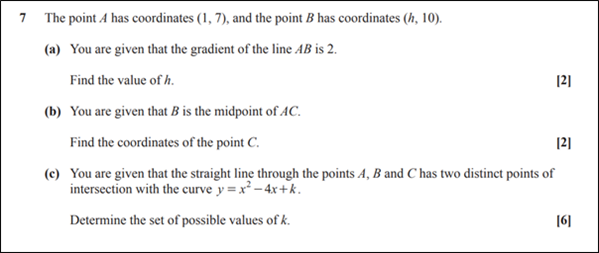A Level Maths: what examiners want to see for proof
12 November 2025
Steven Walker, Maths Subject Advisor

Proof is one of the most powerful tools in mathematics – but also one of the most misunderstood by students. Recent examiners’ reports show that while many students gain partial credit, full marks are often missed due to lack of precision, clarity, or structure.
In this guide I’ll break down some common pitfalls identified by examiners and offer practical teaching strategies using real exam questions to help students master the topic.
What is proof?
Proof is a logical argument that demonstrates a statement is always true. Checking a few examples is not sufficient unless there is a defined set of integer possibilities that can be checked using proof by exhaustion. Proof is about using general reasoning to establish truth for all cases.
Teaching tips: Accuracy with algebraic manipulation is important, especially multiplying out of brackets and factorising into brackets. Always state the proof technique being used, and make sure the conclusion explains how the maths has confirmed the truth of the statement.
Use of logical connectives
The direction of connectives (→, ← and ↔) often causes problems. P → Q reads that if P is true then Q must also be true, however if Q is true in this situation, it does not follow that P must also be true.
For example, if P (integers divisible by 6) and Q (integers divisible by 3) then P → Q since all numbers divisible by 6 are also divisible by 3, but not all numbers that are divisible by 3 are also divisible by 6.
Q3(b) A Level Maths A H240/01 2024

In part (b)(i) it was easy to forget that x = 0 is a solution to x2 = 3x and in part (b)(iii) x = 45 +/– 180 will give tan x = 1.
Teaching tip: Use Venn diagrams or truth tables to explore implications and converse statements.
Disproof by counterexample
Students are generally successful in finding a numerical value that clearly contradicts the proposed conjecture. However, they need to remember to explicitly state how their example disproved the claim.
Question 3 AS Level Maths B H630/02 2023

Just writing 6n – 1 = 35 when n = 6 is not sufficient for a proof: students also need to a conclusion. Explaining that 35 = 5 x 7 and therefore not prime means that the conjecture ‘6n – 1 when n is a positive integer is always prime’ is not true.
Teaching tips: Use sentence starters like “This disproves the conjecture because…” to scaffold student responses. Encourage use of the calculator table function to evaluate values quickly.
Deductive proof
This requires students to define terms clearly and then careful algebraic manipulation.
Question 7 A Level Maths A H240/02 2023

Part (a) needed students to recognise that 4b must be even so, since an even – even = even, a2 must be even. Then because a2 is even, since even × even = even, a must be even. This then sets up a proof by contradiction in part (b).
Teaching tips: Key algebra terms for even numbers (2n) and odd numbers (2n + 1) are necessary in many situations.
Contradiction
It is important that candidates set up a contradiction correctly, stating a clear assumption and reaching a clear conclusion.
Question 12 A Level Maths H640/01 2022

A common mistake was to misinterpret this as looking for a counter example and then misusing the given information, for example giving n = 14 and stating 197 is prime (using n2 +1 by mistake).
Many responses to this question started well, looking at p = n2 – 1 and factorising to p = (n – 1) (n + 1), but then did not proceed to consider what made a number prime or not prime, i.e. n = 2 then (n – 1) (n + 1) = 3 [prime] but any integer n > 2 then (n – 1) (n + 1) is not prime which is a contradiction since a prime number p can only be expressed as 1 × p.
Teaching tip: Use a clear three-step process: state the assumed opposite, derive a contradiction, explicitly conclude how this contradiction proves the original statement.
Stay connected
Sign up for our A Level teacher networks each half term and our professional development webinars.
If you have any questions, you can email us at maths@ocr.org.uk, call us on 01223 553998 or message us on X @OCR_Maths.
Sign up for subject emails to receive the latest maths news, updates and resources.
If you are considering teaching any of our qualifications, use our online form to let us know, so that we can help you with more information.
About the author
Steven originally studied engineering before completing a PGCE in secondary mathematics. He has taught secondary maths in England and overseas. Steven joined Cambridge OCR in 2014 and worked on the redevelopment of the FSMQ and the A Level Mathematics suite of qualifications. Away from the office he enjoys cooking and to travel. You can follow Steven on BlueSky or Linkedin.
Related blogs